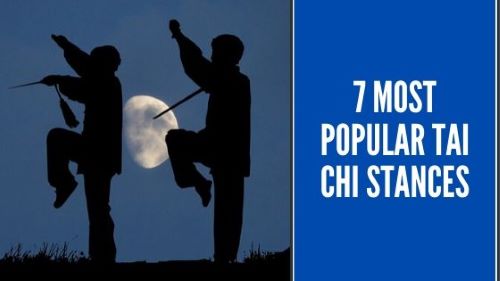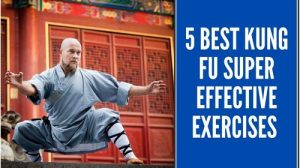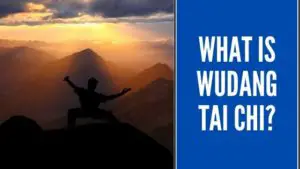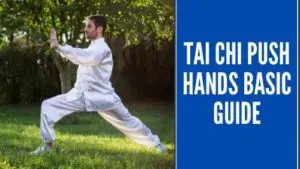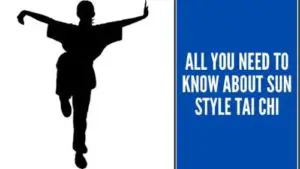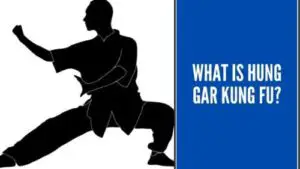Tai Chi is a martial art that originated in China. Tai Chi exercises are beneficial to the body and mind because they help in maintaining strength, flexibility, and balance. People who practice tai chi stances can also get rid of specific conditions like cardiovascular ailments, stress, and depression.
This blog aims to explore various kinds of Taijiquan stances and how they’re done.
What are tai chi stances?
These are a sequence of motions that are conducted in a slow and concentrated manner that go along with deep inhalation. Tai chi stances entail smooth workouts accompanied by stretching. Taijiquan movements promote stability and motion. Each of the actions stresses specific tai chi techniques and concepts.
Types of tai chi stances
The main kinds of tai chi stances are highlighted and explained below:
Horse stance (Ma Bu)
The horse stance derives its name from the position taken while driving a horse. Although Ma Bu is used when fighting, it is also critical during exercises. The horse stance is applied when practicing fists, strengthening of legs, and the back. This type of movement is used when changing techniques and methods.
- When practicing the horse stance, put the feet in a parallel direction slightly beyond the shoulder length.
- Next, bow your knees until the degree between the thighs and the calves is approximately 90º. The trunk must be upright, at the center, and undisturbed.
- The knees should be aligned with the digits of your feet. Have the two feet remaining flat.
Horse stance is designed to create stability, strengthening feet, back, and waist. Additionally, Ma Bu toughens the user’s center and roots.
People who apply horse stance build their physical strength, which comes in two forms: lifting and holding power. Through the holding and lifting power, your body is kept steady and robust.
Horse stance also dispels the notion of boundaries as it enables you to push through the limits that you’ve created in your mind. Through Ma Bu, you can also build a strong and enduring personality.
Related: 5 of the Most Powerful Kung Fu Styles
The Bow-Arrow Stance
The bow-arrow stance is also called mountain climbing and is one of the best tai chi stances applicable in offensive moves.
- In the bow-arrow stance, the lead foot is extended straight ahead.
- The leading leg should also be slightly bowed. The trailing leg is placed outward at an angle of 45º.
- The heels for the trailing and leading feet should be aligned. Have the trailing foot partially bowed or held straight.
- The final part of the procedure should produce a lunging’ shape. You should expect the weight of the front foot to be 70% while that of the rear foot should take the remaining 30%.
There are many perks that can be reaped through the bow-arrow stance. These include: offering stability and balance, enables gradual toughening of the body, and it inculcates the virtues of patience in individuals.
The Rest Stance
Different names are used to describe the rest stance. These include contemporary Wushu know Zuo Pan Bu. This stance is usually applied for forwarding motions.
The outcome of Zuo Pan Bu is a crossed-legged shape that is critical when starting offenses or delivering offensives. The individual must face the opponent. Through crossed leg stance, a practitioner protects their private parts while executing sidekicks to the opponent.
- In the beginning, an individual assumes a horse stance.
- Place one foot behind and bend it down till you look as if you’re sitting on the leg twisted backward.
- At this stage, the practitioner attains a resting stance that shields their private parts from the attacker.
Si Liu Bu
· The Si Liu Bu stance is also called Four Six Stance and is one of the popular tai chi stances applied during defenses.
In terms of how the weight is shared, the Four-Six Stance is the opposite of the bow-arrow position. This means the front foot takes that40% of the weight, and the remaining 60% is distributed to the back leg.
- In this stance, turn the knee of the front leg a bit inward while twisting slightly.
- The front leg should assume an angle of 15º inward. Have the back knee and the digits of the back leg aligned to avoid the harm of the knee.
- It’s advisable not to straighten the knee in this movement because a blow can easily damage the crossed knee.
Fu Hu Bu
Fu Hu Bu is a critical stance applied for simple attacks and defenses. The other names that describe the position include ‘drop stance’, and ‘flat stance’ and tame tiger stance.
As per Changquan, the motion is named after Wu Song, famous for devouring a tiger by applying for the position.
The stance entails a practitioner squatting on one foot and the thigh, taking a parallel position to the ground. The martial artist straightens the other feet. The two legs must be parallel and should extend forward with the trunk.
Related: Tai Chi Push Hands Basic Guide
Xuan Ji Bu
Xuan Ji Bu is also called a false or tricky stance. It’s usually connected with rapid kicking offensives.
You can achieve a False Stance by putting the whole body on one foot. Extend the other leg forward to touch the earth partially.
The front leg without weight is the one applied when launching quick offenses.
Jin Gi Du Li
The Jin Gi Du Li stance is also called Golden Rooster on Single Feet stance. You can achieve this stance by standing one leg like what the rooster sometimes does.
The stance takes the shape of a false position and produces the same objectives, just like the one of tricky stance.
The stance is attained by standing on one foot while closing your eyes. The raised leg must have the toe extended at 45 degrees downwards.
This form is ideal for medical purposes. However, if your intention is offense and defense, you should not close your eyes. The lifted foot must be flexible in executing kicks.
This article has explored the main tai chi stances, their descriptions, and how they can be applied.
